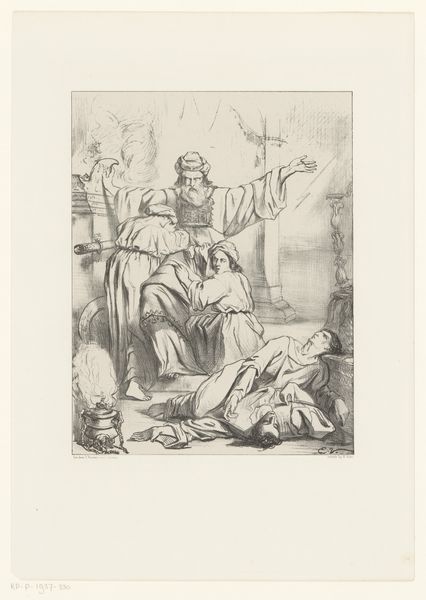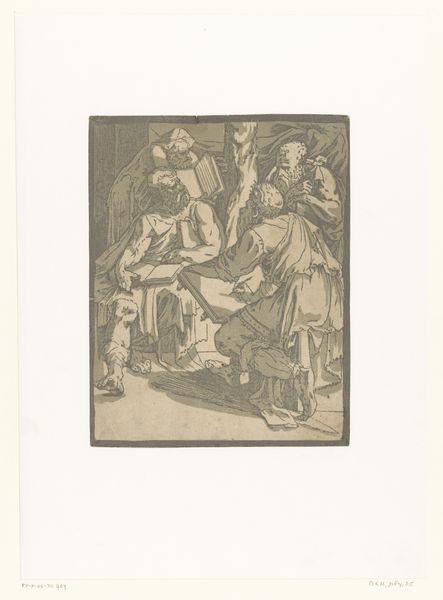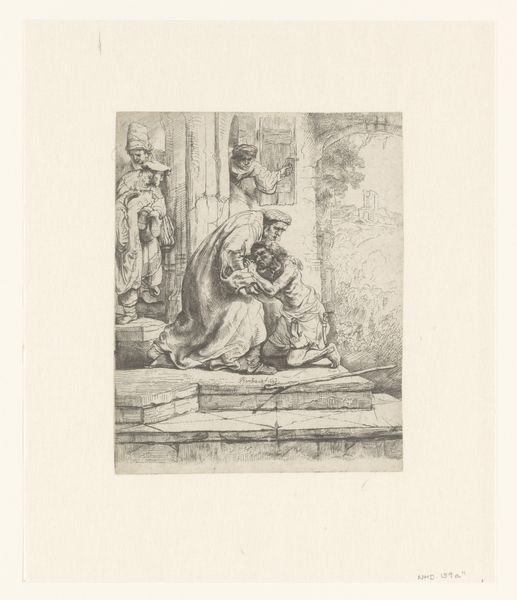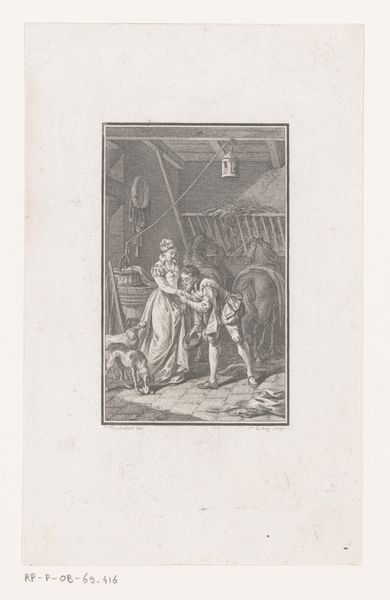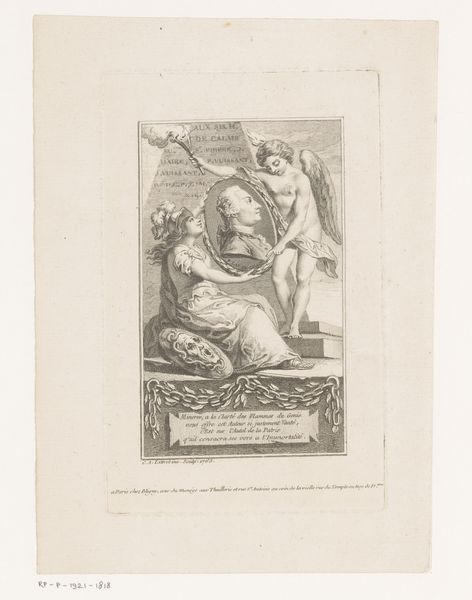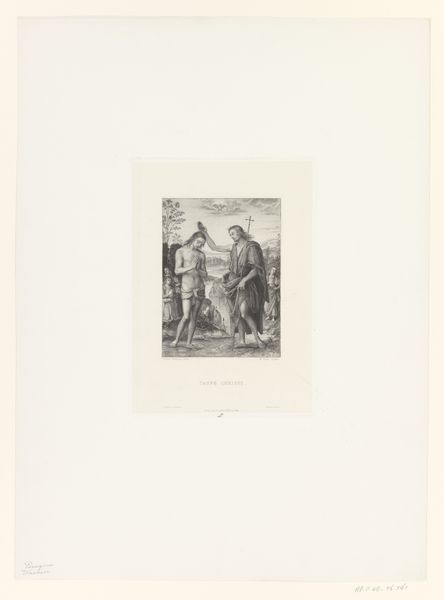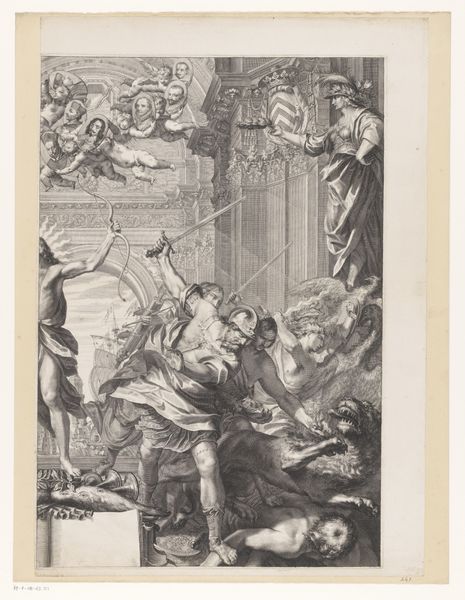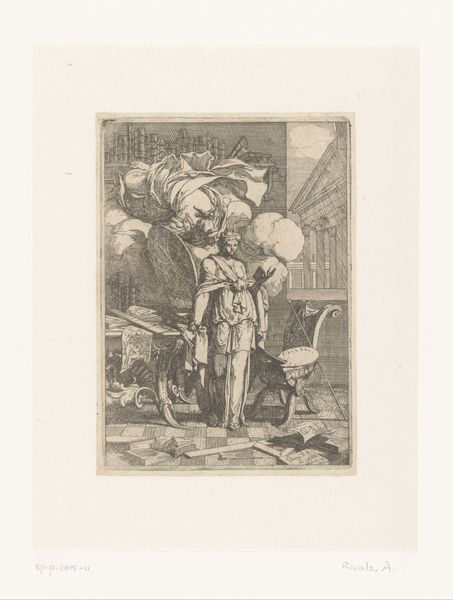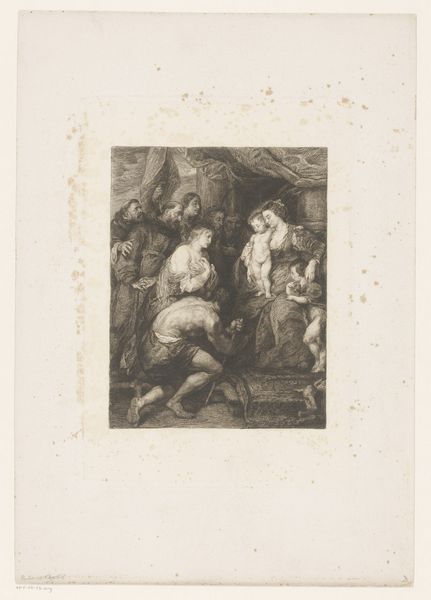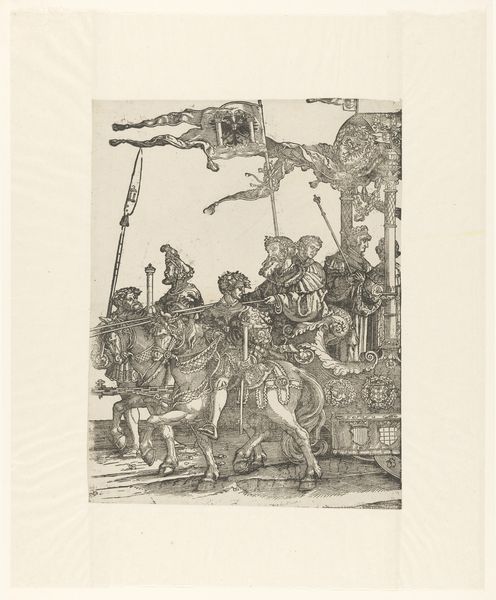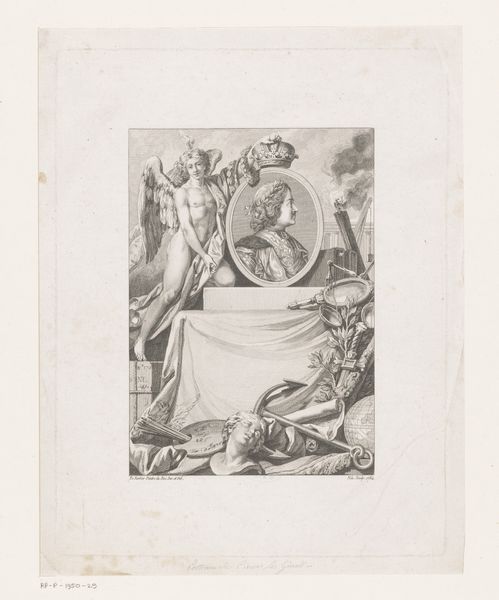
Dimensions: height 237 mm, width 185 mm
Copyright: Rijks Museum: Open Domain
Johann Heinrich Füssli created this etching, *Spookgestalte van Dionysios van Syracuse*, using metal plates and acid to carve fine lines into the surface. The resulting print shows Dionysios, a historical figure from ancient Greece, weighed down by the burdens of leadership. The etching technique itself is significant. It's a method of indirect drawing; the artist doesn't directly cut into the metal, but rather uses acid to do the work, allowing for incredibly intricate detail. Look at the way Füssli has rendered the textures of the fabric, the bark of the tree, and even the skin of Dionysios. These were achieved through laborious and skilled work, controlling the bite of the acid to create the desired effect. Prints like this one were not unique objects. They could be reproduced and distributed widely, making art more accessible to a broader audience. The medium itself, therefore, reflects a shift in the way art was consumed and valued. It moves away from the unique, handcrafted object towards a more democratic, reproducible image. This subtle shift in material and making mirrors a wider societal move towards mass production and accessibility.
Comments
No comments
Be the first to comment and join the conversation on the ultimate creative platform.
